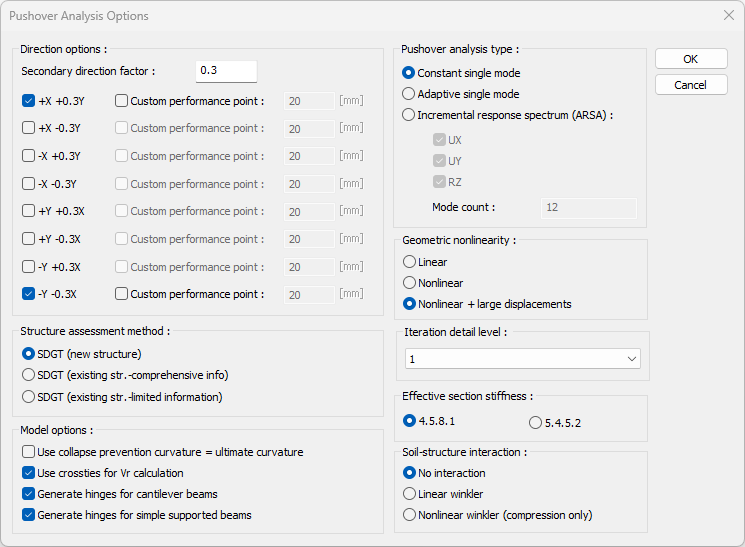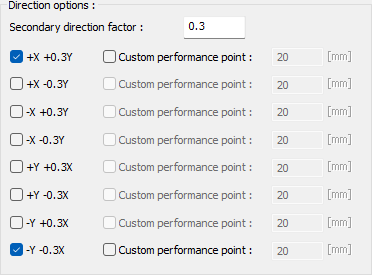Pushover Analysis
With the Pushover Analysis command, pushover analysis (non-linear performance analysis) is performed with the Evaluation and Design Based on Shapeshift (GDT) approach. Pushover analysis is applied to new structures, existing structures and reinforced buildings. In Pushover Analysis, nonlinear material behavior, plastic hinges, plastic rotations, diffuse plastic behavior model strain values, performance point and structural performance are calculated automatically. There are three different pushover analysis methods: constant unimodal pushover analysis, variable unimodal pushover analysis, and Incremental Spectrum Analysis (ARSA) and pushover analysis.
Location of Pushover Analysis Command
You can access the Pushover Analysis command under the Analysis heading of the Ribbon menu Analysis and Design tab .

Usage Steps
Click the Pushover Analysis icon under the Analysis Design icon.
Pushover Analysis Options will appear on the screen.

Click the OK button after making the selections suitable for your project.
The program will start Pushover Analysis.
The process can be followed step by step in the Structural Analysis Status window.
After the analysis is finished, click the OK button in the Structural Analysis Status window.
Specifications |
|---|
Direction options  It shows in which directions and under the influence of which coefficients the pushover analysis will be carried out. Since the principle of superposition is not valid in non-linear analyses, analyzes should be performed separately for all cases. Since this takes some time, while checking the projects at first, only the dominant aspects (eg X+0.3 and X-0.3Y) can be analyzed and checked. These two combinations should all be taken into account when checking your project at the beginning, and when making a final assessment of these two combinations. |
Structure assessment method  In this option, the analysis option is specified according to whether the structure is an existing structure or a new structure. There are differences in terms of material model and evaluation between the building being an existing structure and being a new one. At the same time, the level of knowledge creates differences in the material model in existing structures according to the situations specified in TBDY 15.2.4 and 15.2.5 . |
Pushover analysis type  You can choose any of the fixed single-mode, variable single-mode and multi-mode propulsion methods specified in TBDY Section 5.6 . ARSA method is used as multimodal pushover analysis. |
Geometric nonlinearity  It is possible to determine how nonlinear behavior in terms of geometry is taken into account in the intermediate steps of the pushover analysis. Accepting the second order effects as linear does not make a serious difference for reinforced concrete structures. |
Iteration detail level  In this facility, the sensitivity made in the pushover analysis is determined from 1 to 5. A lower sensitivity at 1 means a high sensitivity at 5 level. |
Effective section stiffness  It allows the curtain elements to be modeled with linear material. It speeds up the analysis somewhat, but the nonlinear behavior of the screen is neglected. |
Soil-structure interaction  It allows the soil-structure interaction to be taken into account in pushover analysis. |
Use collapse prevention curvature = ultimate curvature  In the calculation of pre-collapse curvature values in pushover analyses, it ensures that the concrete and rebar unit deformation limit values are calculated with the values specified in TBDY 5.8.1.1. |
Use crossties for Vr calculation  In column ductility checks, it ensures that the contribution of crossties is taken into account in the column shear capacity calculation. |
Generate hinges for cantilever beams  Allows identification of plastic hinges in cantilever columns in pushover analysis |
Generate hinges for simple supported beams  It enables the definition of plastic hinges in simple supported beams that are hinged at both ends or not connected to columns at both ends. |
Next Topic
